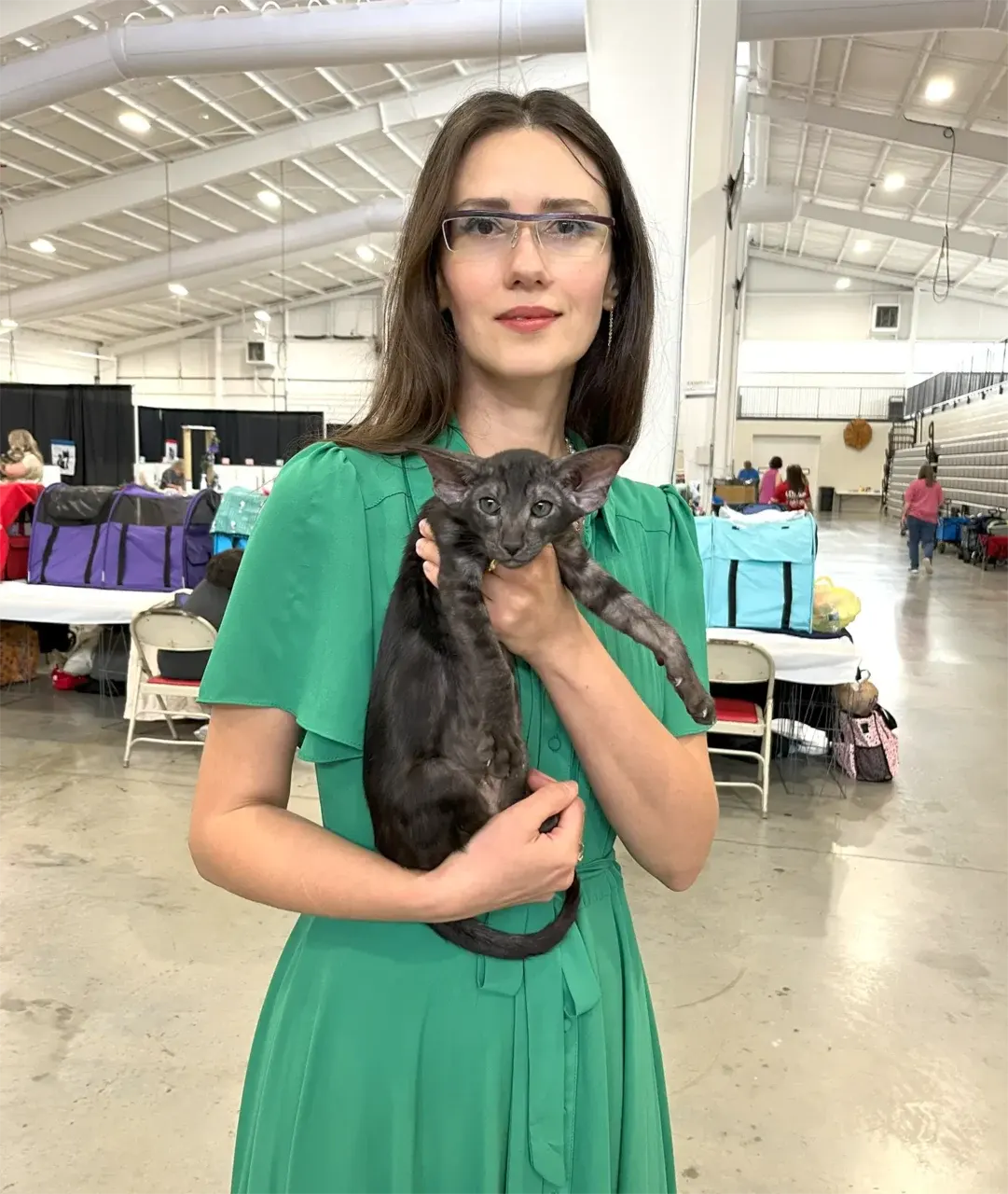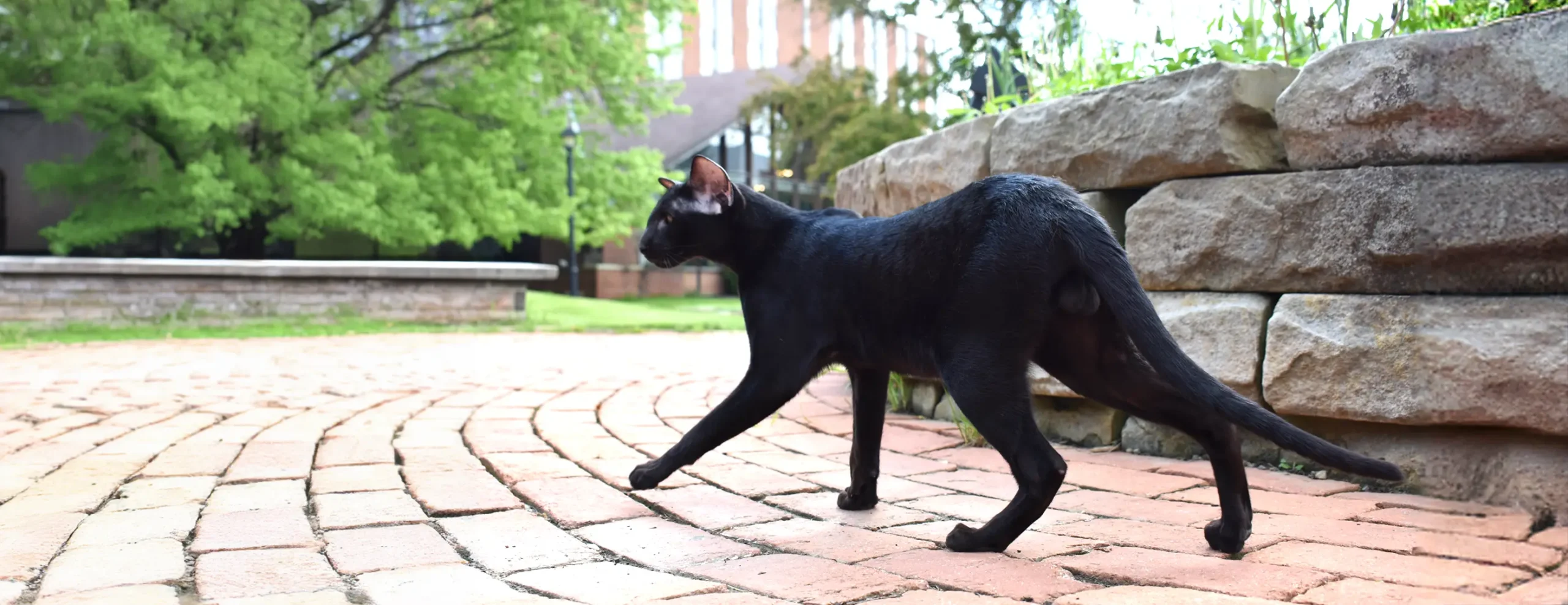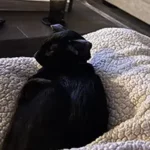There are several options available for shipping kittens to their new homes.
First of all, let’s clarify the difference between Oriental and Siamese cats. Oriental Shorthair cats are direct descendants of the Siamese breed, sharing their roots in ancient Thailand.
In the late 19th century, Siamese cats were brought to Europe, where breeders began to explore different color variations. Although the Siamese breed was initially recognized only for its pointed pattern, breeders soon developed an interest in producing solid-colored cats with the same body structure and personality as the Siamese.
This led to the birth of the Oriental Shorthair breed. By the 1960s, breeders had successfully established a new line of sleek, shorthaired cats, which offered a wide variety of colors. Today, Oriental Shorthairs are cherished for their elegance, intelligence, and diverse range of colors and patterns.

Are Oriental Shorthair cats rare?
Oriental Shorthair cats are not considered rare, but they are less common compared to breeds like Bengals or Maine Coons. While they may not be as widely recognized, their unique appearance and vibrant personalities have gained them a dedicated following among cat enthusiasts and breeders worldwide.
Are Oriental Shorthair cats high maintenance?
Oriental Shorthair cats are relatively low maintenance when it comes to grooming, thanks to their short, sleek coat that lies close to the body and lacks an undercoat. They don't require frequent brushing, but occasional grooming helps keep their coat shiny and healthy. Additionally, regular nail trimming is important to prevent overgrowth and discomfort, which can be done at home or during a visit to the vet or groomer.
Although their grooming needs are simple, Oriental Shorthairs are highly active and intelligent cats that require plenty of mental and physical stimulation. They enjoy interactive play, such as chasing toys, retrieving balls, or playing with puzzle feeders that challenge their minds. Without proper stimulation, they may become bored or restless, which can lead to behavioral issues. These cats thrive in homes where they are engaged with family members and have a variety of toys to keep them entertained.
In addition to active play, Oriental Shorthair cats benefit from climbing structures, such as cat trees or shelves, where they can explore and stay physically active. Providing these outlets for both mental and physical energy is essential to keeping them happy and healthy.

Oriental Shorthairs should also visit the veterinarian annually for regular check-ups, vaccinations, and dental care. This helps ensure they stay healthy and catch any potential health issues early on. Since they are sensitive to cold due to their lack of an undercoat, it's important to keep them warm, especially during colder months.
Oriental Shorthair health issues
While Oriental Shorthair cats are generally healthy, they can be prone to certain genetic health conditions. One of the main concerns is progressive retinal atrophy (PRA), a genetic disorder that can lead to vision loss. Fortunately, thanks to modern genetic testing, breeders can easily identify and eliminate carriers of this gene from their breeding programs. For example, at Cataristocrat, none of the breeding cats carry the PRA gene, ensuring that this issue does not affect their lines.
Kidney health is another concern for Oriental Shorthairs, as they can be prone to chronic kidney disease (CKD). Regular vet check-ups, including blood tests and urinalysis, help monitor kidney function and catch any potential problems early.
Additionally, amyloidosis, a condition where amyloid proteins build up in organs like the kidneys or liver, can affect Oriental Shorthairs. This breed-related issue can lead to organ failure over time. Although it is not highly common, it's important to be aware of the risks and monitor health regularly.
Lastly, dental care is essential, as Oriental Shorthairs can be prone to dental issues. Routine cleanings and regular check-ups help maintain their oral health and overall well-being.
Oriental Shorthair lifespan

The lifespan of an Oriental Shorthair can vary, but indoor cats generally live much longer than those who are allowed to roam outdoors unsupervised. Indoor cats, especially those kept in a stable and safe environment, with access to clean water, high-quality food, and regular veterinary care, can live between 10 and 15 years or more. Outdoor cats, on the other hand, are exposed to many more risks, including accidents, diseases, and environmental stress, which can significantly shorten their lifespan.
Oriental Shorthair colors
One of the most remarkable traits of Oriental Shorthair cats is the incredible variety of colors and patterns they come in. Unlike Siamese cats, which are limited to point coloration, Oriental Shorthairs can display a vast array of solid colors, tabby patterns, tortoiseshell, bicolor, and more. This allows for a highly diverse and unique appearance among the breed, with over 300 recognized color and pattern combinations.
Oriental Shorthair personality
Oriental Shorthairs are known for their playful, energetic, and social personalities. They are highly affectionate cats that form strong bonds with their owners and thrive on attention. These cats are intelligent and curious, often following their owners around the house and participating in everyday activities. Their lively and engaging nature makes them wonderful companions for those who enjoy interacting with their pets.
However, before an Oriental Shorthair reveals its true personality, you must first earn its trust. When you bring an Oriental kitten or cat into a new home, they often hide and act cautiously at first. It’s crucial to handle this situation properly—keeping other animals away, designating a single quiet room for the cat, and allowing them to adjust gradually. If you introduce a cat into a chaotic environment where a dog or other pets immediately try to assert dominance, you risk the Oriental becoming withdrawn, fearful, or even depressed.
By taking the time to create a calm and safe space, you’ll help your Oriental Shorthair feel comfortable, and once they trust you, their affectionate and engaging nature will truly shine.

Are Oriental Shorthair cats talkative?
Oriental Shorthair cats, like their Siamese relatives, are often quite talkative. They are known for their distinct voices, which can sometimes sound like a baby crying. This vocal nature is part of their charm and allows them to communicate their needs and emotions effectively. However, not all Oriental Shorthairs are highly vocal—some can be much quieter, choosing to express themselves in other ways.
Do Oriental Shorthair cats like to be held?
Oriental Shorthair cats are very affectionate, but whether they enjoy being held often depends on the individual cat. Some Oriental Shorthairs may love being picked up and carried around, especially if they are raised in a loving and calm environment where they feel secure. Others may prefer to show their affection by sitting next to you or following you around the house rather than being held.
It's important to remember that Oriental Shorthairs are highly sensitive to their surroundings. If they feel safe and have developed trust with their owner, they are more likely to enjoy being held or cuddled. However, just like any cat, it’s crucial to respect their boundaries and not force them into situations that make them uncomfortable.
Olga Shatokhina.






